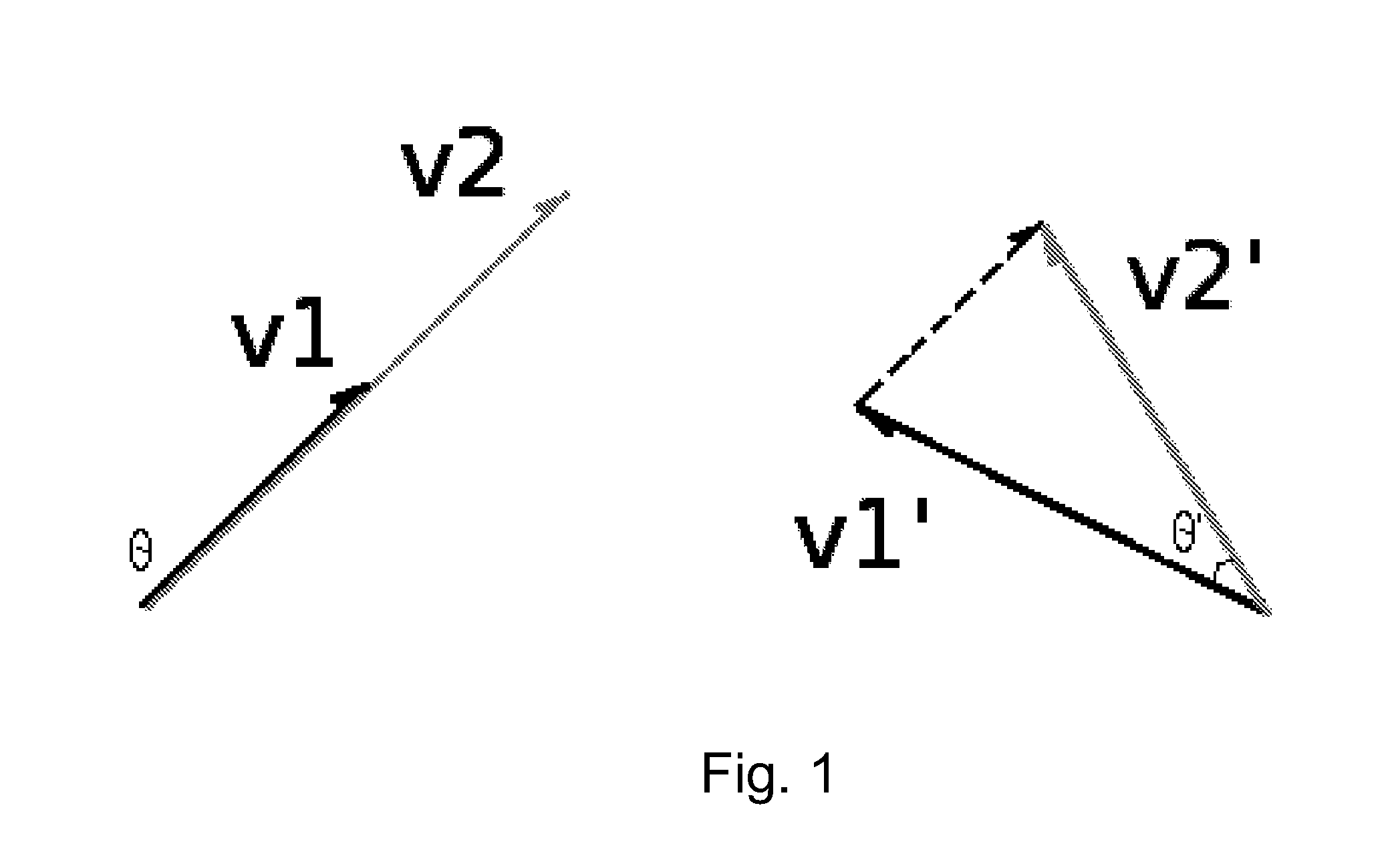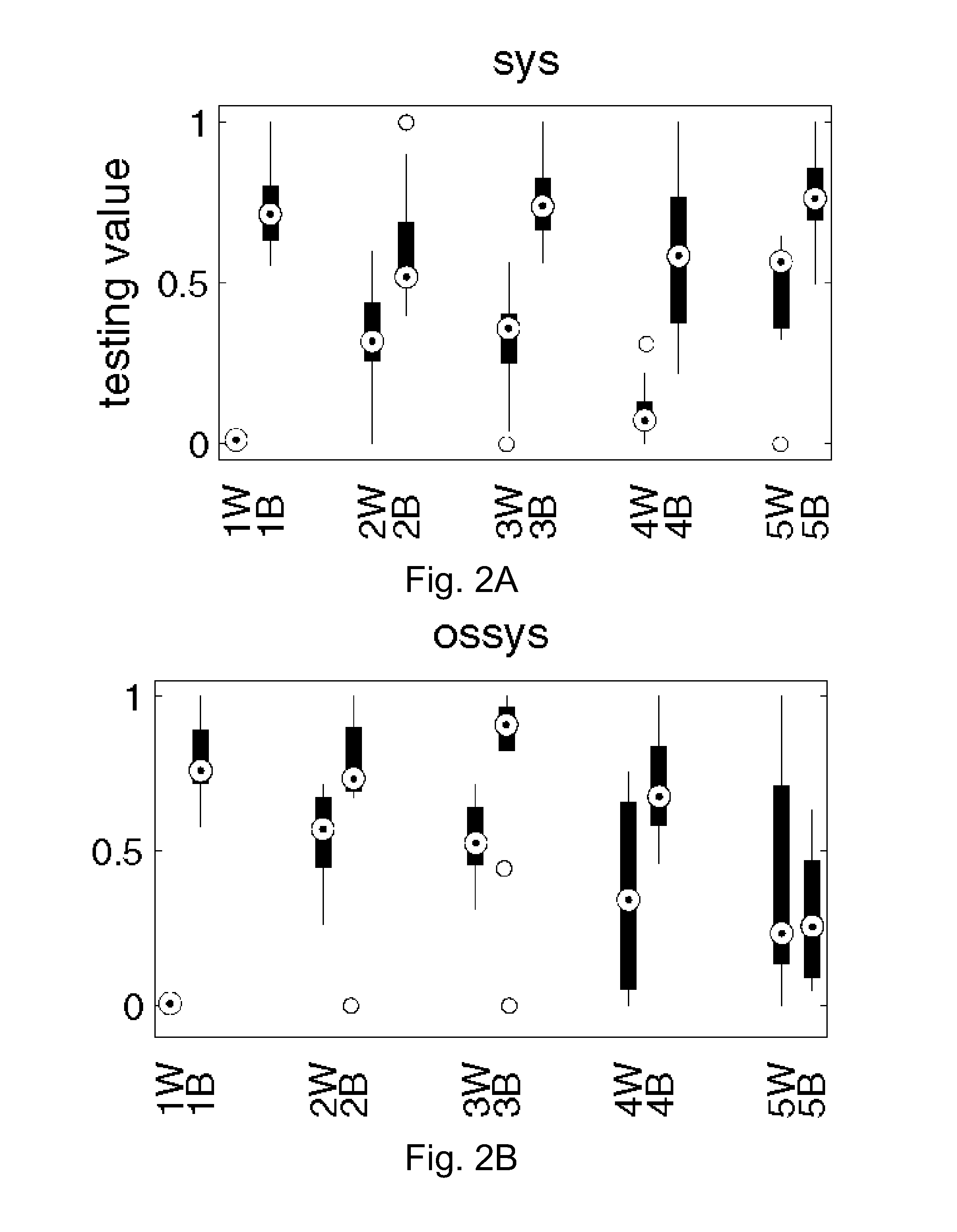Pattern change discovery between high dimensional data sets
a high-dimensional data set and pattern change technology, applied in the field of pattern change discovery can solve the problems of unsupervised methods, inaccurate subspace change detection between high-dimensional data sets solely through magnitude-based metric, conceptual confusion, etc., to facilitate the underlying process, short tail, and eliminate noise
- Summary
- Abstract
- Description
- Claims
- Application Information
AI Technical Summary
Benefits of technology
Problems solved by technology
Method used
Image
Examples
Embodiment Construction
[0043]Pattern change discovery between high-dimensional data sets may therefore be detected, by, for example, determining a linear model of a dominant subspace for each pair of high dimensional data sets, and using matrix factorization to produce a set of principal angles representing differences between the linear models. A set of basis vectors is defined under a null hypothesis of no statistically significant pattern change, and under an alternative hypothesis of a statistically significant pattern change. A statistical test is performed on the basis vectors with respect to the null hypothesis and the alternate hypothesis to determine whether a statistically significant difference is present.
[0044]The statistical test may employ a likelihood ratio statistic given by
Λ=X-P^S^T2X-P^HS^HT2
based on {circumflex over (P)},Ŝ and {circumflex over (P)}H,ŜH, wherein ̂P and ̂S represent estimates of Pm×k and Sn×k which are lower dimension factors whose product approximates the high dimensiona...
PUM
 Login to View More
Login to View More Abstract
Description
Claims
Application Information
 Login to View More
Login to View More - R&D
- Intellectual Property
- Life Sciences
- Materials
- Tech Scout
- Unparalleled Data Quality
- Higher Quality Content
- 60% Fewer Hallucinations
Browse by: Latest US Patents, China's latest patents, Technical Efficacy Thesaurus, Application Domain, Technology Topic, Popular Technical Reports.
© 2025 PatSnap. All rights reserved.Legal|Privacy policy|Modern Slavery Act Transparency Statement|Sitemap|About US| Contact US: help@patsnap.com



